Key takeaways:
- E-learning platforms offer flexibility and a variety of multimedia resources, improving engagement and comprehension, especially for learners with dyslexia.
- The self-paced nature of e-learning helps reduce anxiety and allows individuals to revisit challenging materials, boosting confidence.
- Community support through forums and discussions is invaluable, providing motivation and reassurance to learners facing similar challenges.
- Selecting the right platform that aligns with unique learning styles and offers accessible features is crucial for an effective learning experience.
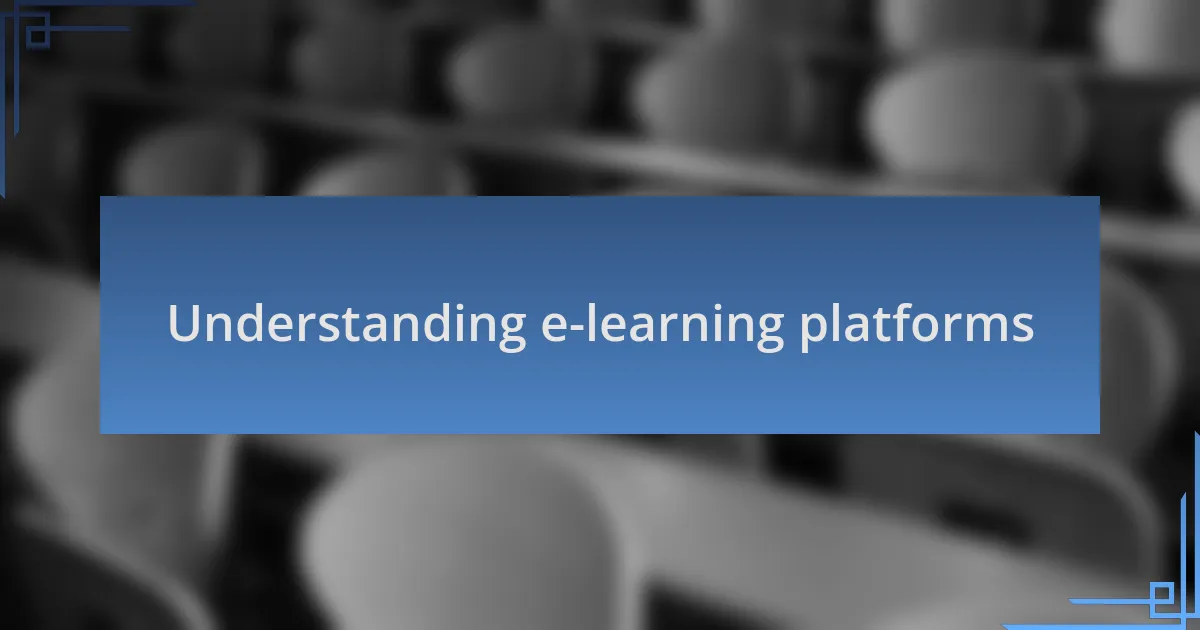
Understanding e-learning platforms
E-learning platforms have revolutionized the way we access education, offering flexibility that traditional classrooms often lack. I remember the first time I signed up for an online course; I felt a mix of excitement and apprehension. Would I be able to stay focused without a teacher in front of me? Surprisingly, I found that the self-paced structure allowed me to dive deeper into topics that interested me.
These platforms typically feature various multimedia resources, such as videos, quizzes, and forums, enhancing the learning experience. When I engaged with interactive content, it was like having a conversation with the material—something that made complex topics feel more approachable. Have you ever tried using a forum to discuss ideas? I found that sharing insights with others provided an enriching layer to my learning journey.
In many ways, e-learning platforms democratize education, making it accessible to a broader audience. When I saw learners from diverse backgrounds sharing their experiences, it reminded me of the power of community in the learning process. Isn’t it fascinating how technology can connect us in unexpected ways? Understanding these nuances has enriched my appreciation for the potential of e-learning in different contexts.
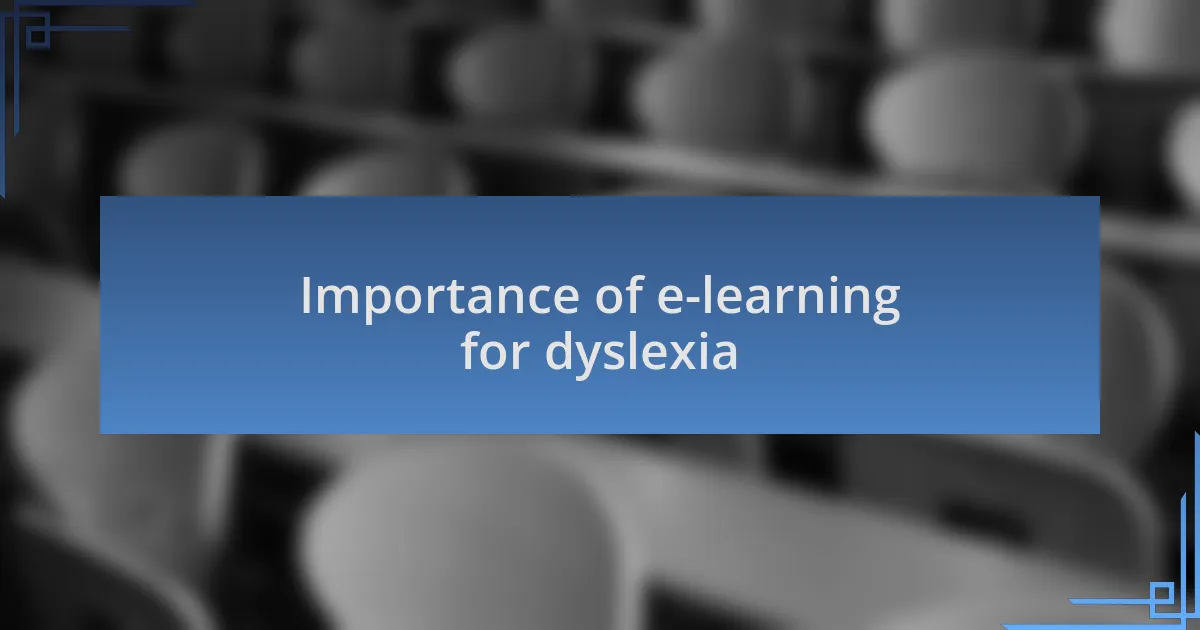
Importance of e-learning for dyslexia
The role of e-learning in supporting individuals with dyslexia is crucial. In my experience, the multi-sensory approach often employed in e-learning courses—like incorporating audio and visual elements—can make complex information easier to grasp. Have you ever noticed how certain formats, like videos with captions, can enhance understanding? I sure did when I first explored them; they helped me connect the dots when reading seemed overwhelming.
Moreover, the flexibility of e-learning allows learners to progress at their own pace. I vividly remember a time when I struggled to keep up in a traditional classroom setting, often feeling frustrated and lost. With e-learning, I could revisit challenging materials whenever I needed, which drastically reduced my anxiety and boosted my confidence. Doesn’t it feel empowering to take control of your own learning journey?
Another key benefit is the anonymity e-learning can provide. For those dealing with dyslexia, the fear of judgment can be paralyzing. I found that participating in discussion threads or online group projects from the comfort of my home gave me a sense of security that I hadn’t experienced before. This supportive environment encourages risk-taking and exploration, crucial elements in overcoming the challenges dyslexia presents. Isn’t it amazing how the right learning atmosphere can foster growth?

Different types of e-learning platforms
When I think about e-learning platforms, several types come to mind, each with unique features that cater to different learning needs. For instance, there are learning management systems (LMS) that offer structured courses with set curriculums. I’ve used platforms like these before, and they felt almost like stepping into a classroom without the physical constraints. The ability to track progress in real-time was a game-changer for me.
On the other hand, I’ve encountered more flexible options, such as online resources and educational websites, that allow for self-directed learning. You know, the kind where you can just dive into videos or articles that resonate with you? I remember spending countless late nights exploring these platforms, and it was through this eclectic mix of resources that I discovered my preferred learning style. It was liberating to learn about dyslexia at my own pace, piecing together information as it clicked.
Additionally, I’ve come across interactive platforms featuring gamified learning experiences. These are designed to make the educational process feel less daunting. I can still recall the excitement I felt while completing challenges and earning badges; it almost turned learning into a fun adventure rather than a chore. Have you ever felt that rush of accomplishment from a well-earned reward? It’s moments like these that can really motivate someone, especially when navigating the complexities of dyslexia.
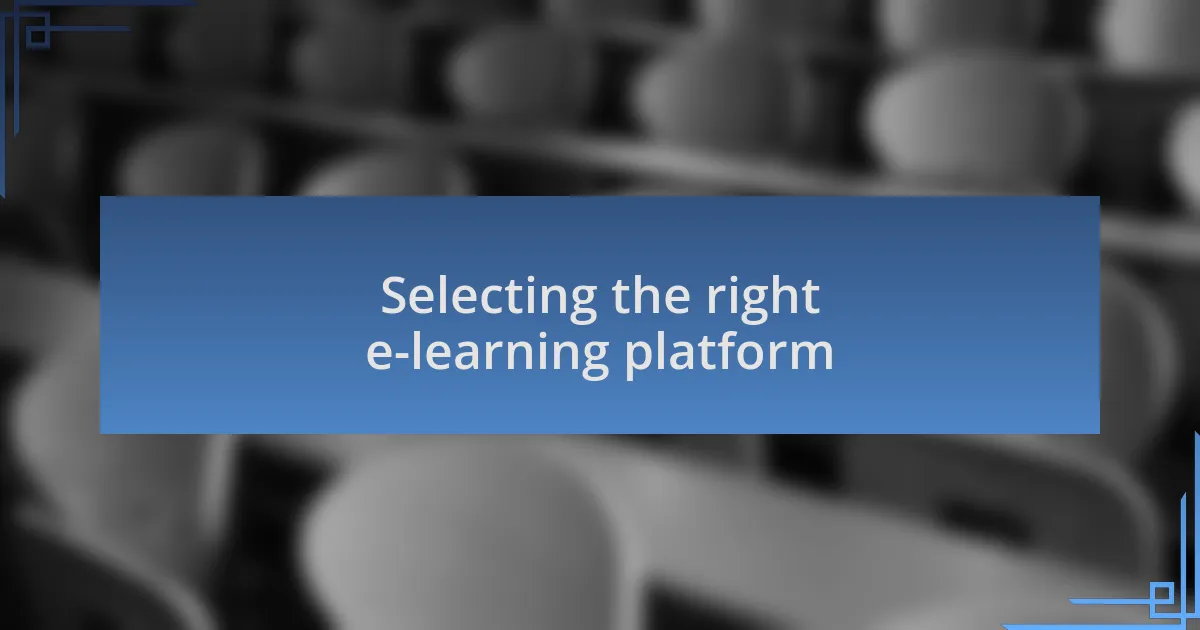
Selecting the right e-learning platform
Choosing the right e-learning platform is crucial for a positive learning experience, especially for those of us with unique learning needs. I once struggled to find a platform that combined engaging content with accessibility features. When I finally discovered a site that highlighted dyslexia-friendly resources, it was like finding a missing puzzle piece; I immediately felt understood and supported.
It’s important to evaluate the platform’s compatibility with your learning style. I remember testing out a few platforms that promised comprehensive content but ended up overwhelming me with dense text and minimal visuals. The moment I started prioritizing platforms that utilized color-coded information and clear visuals, my retention improved dramatically. Have you ever noticed how certain formats just make concepts click?
Additionally, look for platforms that offer a supportive community or forums for interaction. When I found a site with an active discussion board, it transformed my learning journey. Sharing experiences and advice with others facing similar challenges was not only motivating but also comforting. Finding that connection made my path less lonely and added a layer of accountability that I didn’t know I needed.
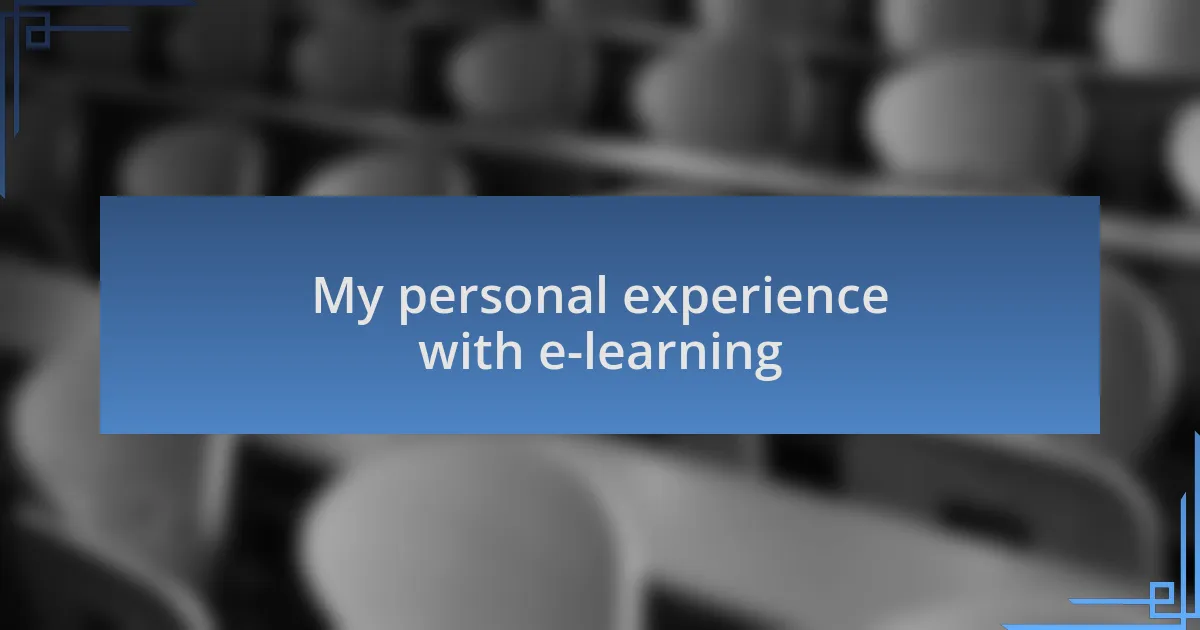
My personal experience with e-learning
E-learning has been both a revelation and a challenge for me. I vividly recall my first attempt at an online course; the enthusiasm quickly faded when I encountered endless scrolling of text. Frustration set in, and I questioned whether I’d ever find a platform that truly catered to my learning style. But then, I stumbled upon a program designed with interactive elements. Suddenly, I was captivated – the quizzes and videos made all the difference.
One memorable experience stands out. While using a platform that incorporated audio support, I found it easier to grasp complex concepts. The narration felt like a personal tutor guiding me along, making me wonder why I hadn’t sought out audio resources sooner. Have you ever realized that a simple change, like listening instead of reading, can unlock a whole new level of understanding?
As I navigated different platforms, I began to appreciate the role of feedback. A particular e-learning course provided instant quizzes after each section, allowing me to assess my understanding right away. This immediate insight encouraged me to revisit areas I struggled with, reinforcing the idea that learning is a journey, not a race. It’s fascinating how real-time feedback can transform the way we approach our studies, isn’t it?
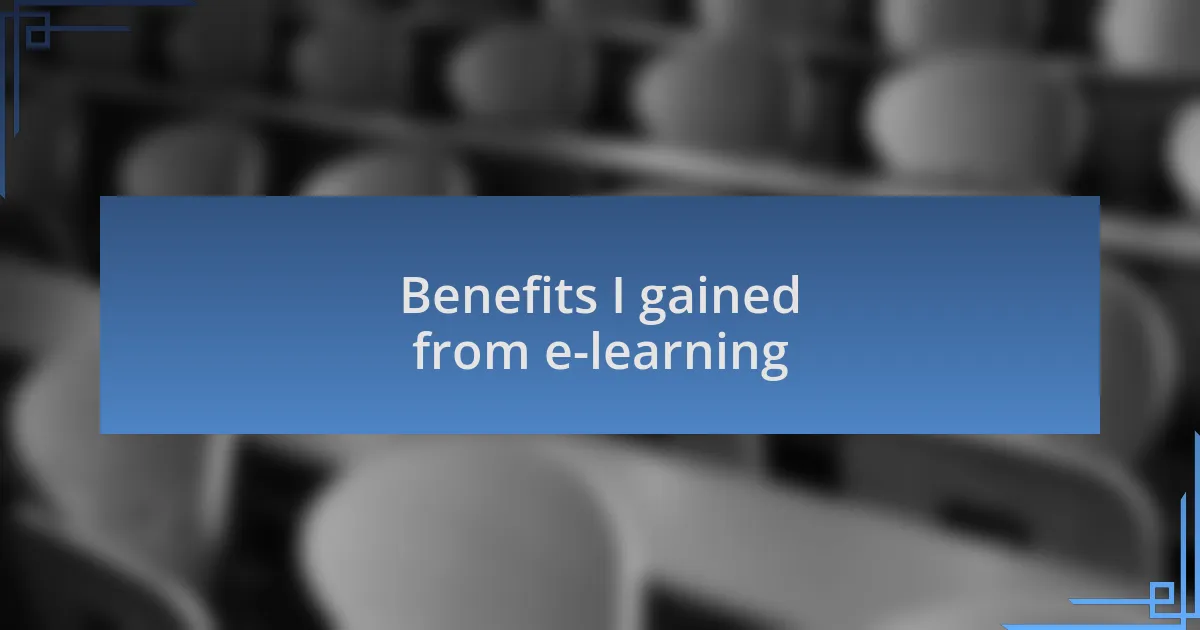
Benefits I gained from e-learning
The flexibility of e-learning platforms has been a game-changer for me. I can learn at my own pace, which is especially crucial when dealing with dyslexia. I remember late nights when I could revisit complex videos, rewinding and pausing until everything clicked. This adaptiveness not only reduced stress but also boosted my confidence, reminding me that learning doesn’t have to happen on someone else’s schedule.
One of the most unexpected benefits has been the sense of community. I often found myself engaging in forums and discussion groups where fellow learners shared their experiences. It was encouraging to realize I wasn’t alone in my struggles. Connecting with others who faced similar challenges added a layer of camaraderie that traditional learning environments often lack. Have you ever leaned on a community for support? It truly makes a difference.
Moreover, the varied content delivery methods have catered to my unique learning needs. Interactive simulations, visual aids, and even gamified elements kept me motivated. I recall one project where I explored a topic through a game format—what was once daunting became a breeze. Isn’t it fascinating how the right tools can transform our approach to learning?